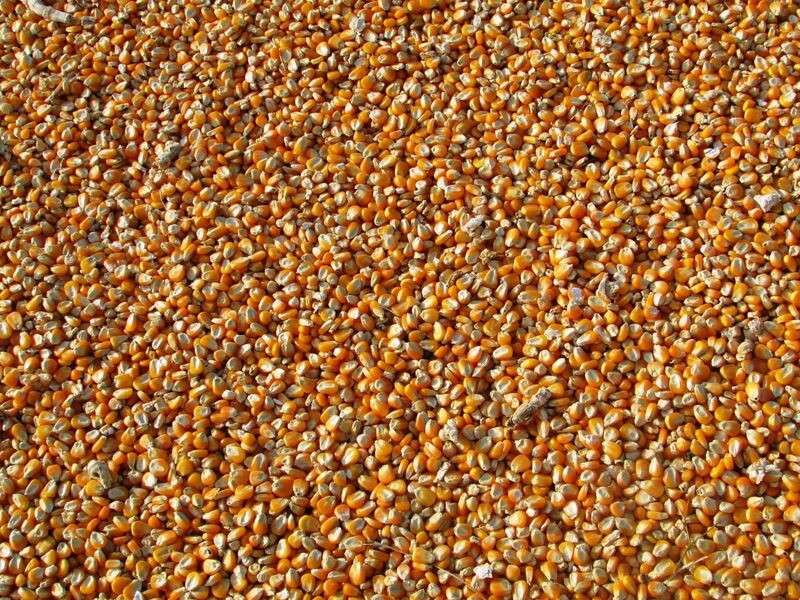|
|||||||||||||||
|
Name
Cash Bids
Market Data
News
Ag Commentary
Weather
Resources
|
Grains Futures Markets Traders Brush Off WASDE. What to Watch Next.
Grain traders at mid-week have brushed aside Tuesday’s monthly USDA supply and demand report (WASDE) that contained no surprises, as expected. The agency made no changes to its forecasts for 2024-25 marketing year U.S. corn, soybean and cotton ending stocks. It raised projected carryover for U.S. wheat and made only modest changes to global ending grain stocks. Importantly, Tuesday’s WASDE report only considered U.S. trade policies that were in effect at the time of publication. Further, unless a formal end date is specified, the report also assumed that these trade policies remain in place. Said USDA:
This suggests upcoming monthly WASDE reports may be more price-impactful (likely bearish) for grains, regarding more retaliatory tariffs and sanctions against U.S. ag products. Risk Aversion Squelching Grain Market BullsPresident Donald Trump’s seemingly daily pronouncements on U.S. tariffs and quick retaliatory moves from targeted countries have unnerved the general marketplace. Major U.S. stock indexes this week fell to six-month lows on worries of a potential global trade war prompting a domestic and potentially global economic recession. The risk-off mentality in the marketplace is a significantly bearish element for grain futures markets. 
Indeed, this week’s selling pressure in the grain futures markets is mostly due to heightened worries that U.S. agricultural products will be increasingly sanctioned in retaliation by major U.S. ag-importing countries. This week Trump imposed 25% tariffs on steel and aluminum imports, impacting all global suppliers. The European Union launched countermeasures, planning to impose its own duties on up to $28.3 billion worth of U.S. products, including poultry and beef. Major Asian steel and aluminum producers, including South Korea, Taiwan, Japan and Australia, have so far held off on retaliating. China’s foreign ministry said it will take all necessary measures to safeguard its rights and interests, noting the U.S. move violated World Trade Organization rules. U.S. Ethanol May Be in Canada’s Crosshairs for SanctionsCanada, which has been a major target for U.S. tariffs, could impose non-tariff measures such as restricting its oil (CBK25) exports to the U.S. or levying duties on U.S. imports if the trade dispute escalates further, Canada’s energy minister Jonathan Wilkinson said in an interview with Reuters. “Everything is on the table.” Wilkinson said Canada is considering imposing tariffs on U.S. ethanol as part of a second tranche of trade penalties if Trump continues to escalate the trade war, noting ethanol is “absolutely on the list of things” that could face tariffs. This news has put the corn (ZCK25) futures market under extra heavy selling pressure at mid-week. Meantime, veteran policy analyst Jim Wiesemeyer this week reported that Iowa biodiesel plants have been idled amid tax credit uncertainty. The expiration of the $1-per-gallon blenders tax credit on Dec. 31, 2024 has led to the shutdown of multiple biodiesel plants in Iowa. “Industry leaders face uncertainty as the Treasury Department has yet to finalize rules for the replacement 45Z Clean Fuel Production Tax Credit. Five of Iowa’s 10 biodiesel plants are idled, with supply chains disrupted. Sen. Chuck Grassley (R-Iowa) criticized the Biden administration for the situation, calling for increased Renewable Volume Obligations,” said Wiesemeyer. 
Slumping U.S. Dollar Working in Favor of Grain Market BullsOne positive element for the grain markets at present is a down-trending U.S. Dollar Index ($DXY), which this week hit a four-month low. Since most world agricultural trade is conducted in U.S. dollars, the depreciating greenback makes U.S. ag products more price-competitive on world markets, when purchased in non-U.S. currency. History suggests the U.S. Dollar Index may see continued selling pressure in the coming weeks, or longer. 
Late-March USDA Reports Coming More in FocusThe March 31 USDA planting intentions and quarterly grain stocks reports are now in the line of sight for grain traders. These two reports are among the most market-sensitive USDA releases. U.S. producer decisions over corn versus soybean (ZSK25) planted acreage remains fluid. Soybeans may be hit the hardest in the tariff war, which could reduce planted acres amid worries of lower prices. However, potentially higher input costs for corn could prompt a substitution move to soybean planting. And with cotton (KGK25) futures prices trending lower over the past six months, that could change the minds of some cotton producers who may shift to row crops, where possible. 

On the date of publication, Jim Wyckoff did not have (either directly or indirectly) positions in any of the securities mentioned in this article. All information and data in this article is solely for informational purposes. For more information please view the Barchart Disclosure Policy here. |
|
|